How to Temporarily Remove Keys from Macbook
Remove the key

Unplug your Mac and turn it off. Click the Apple menu, select Shut Down. and then click Shut Down when prompted. This ensures that you will not be electrocuted and that your Mac will not be affected when you remove the key.

Self-grounding . Even though you're not touching circuits or similar sensitive components inside the device, self-grounding only takes a few seconds and will help eliminate the risk (however small) of the key's electronic components being affected.

Find a tool to pry the key up. You need something with a relatively large, thin, and hard surface. Here are a few suggestions:
Guitar pick keys
Credit card/ATM
Plastic component pry stick
Plastic butter knife

Collect tools. You'll need a cotton swab (to clean the spaces between the keys) and a toothpick or similar thin, pliable object (to scrape away the dirt stuck around the keys).
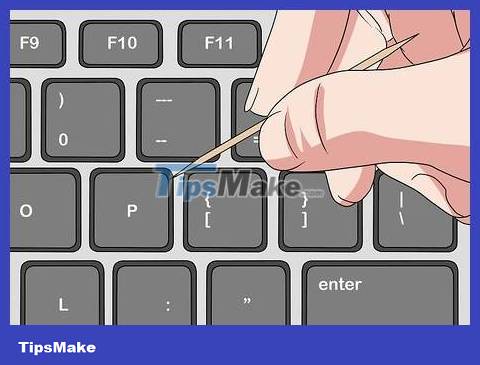
Clean underneath the keys. Use a toothpick (or similar object) to scrape the bottom around the key. This will remove debris, dirt, etc. from the keys.
As always, you need to be gentle so you don't get the toothpick stuck under the key.
Insert the toothpick only about 3 mm below the key.
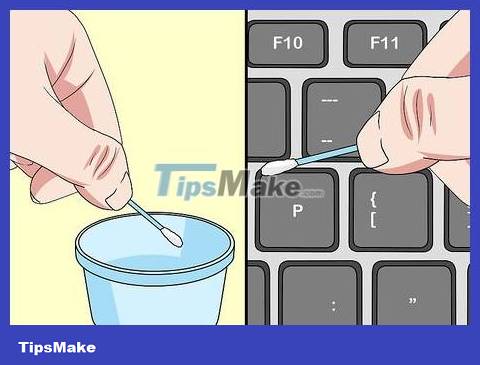
Clean the area around the keys. Dip a cotton swab in some warm, clean water, then squeeze out all the water (because we only need the cotton tip to be slightly damp) and sweep the area around the key.
This will remove any sticky or greasy build-up around the keys, making it easier for you to remove the buttons.
This step also helps clean away any dirt left behind after you scrape with a toothpick.
You can use isopropyl alcohol instead of water if the dirt around the keys is too stubborn.
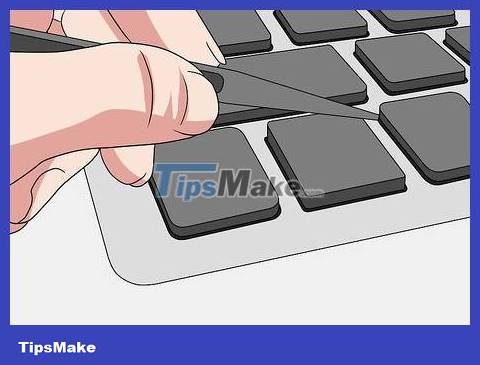
Insert the pry tool into the space under the key. This is where the key is most likely to separate.
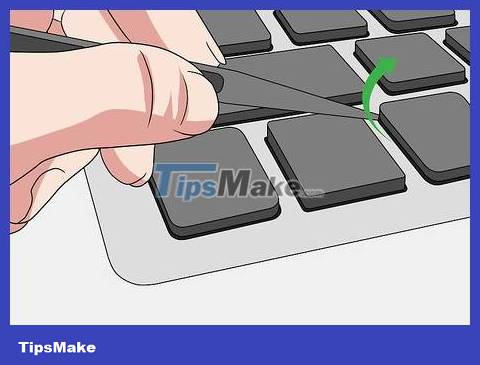
Gently pry the key up. You may need to push the tool back and forth while prying; When a few light 'clicks' sound, the keycap has popped off.
After inserting the pry tool into the space below the key, you can press the tip of the stick down a little deeper to increase the pulling force.
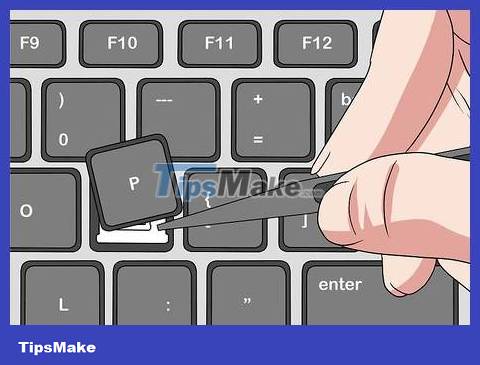
Turn the key and pull straight up. The top of the key should face you while pulling, so the key's hook won't get stuck.
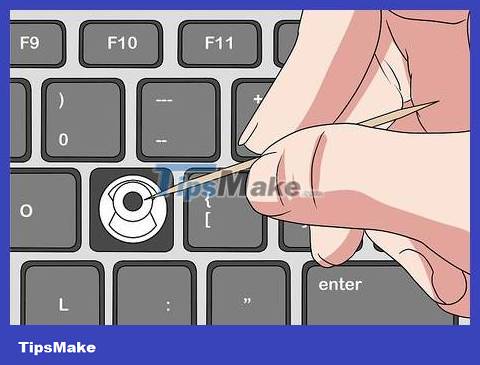
Carry out repairs if necessary. After doing what needs to be done, you can put the key back.
Install the key
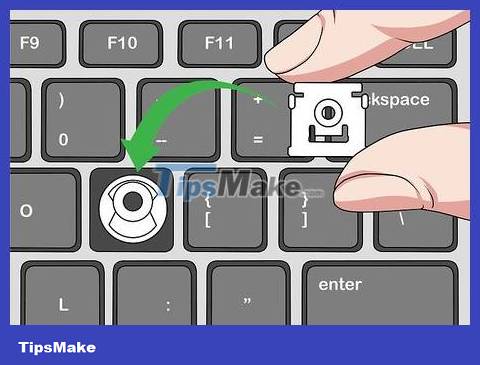
Reinstall or replace key components if necessary. Below the key is a white frame and a smaller plastic piece; This structure helps your Mac's keycaps snap in and out of place easily. To reinstall the keycaps, simply insert the smaller plastic piece into the frame, then snap the frame back into place vertically so that the small square hole is to the right of the gap.
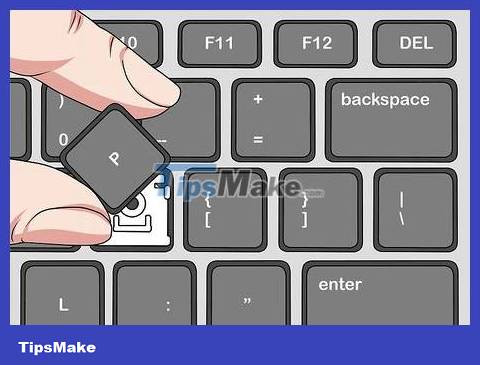
Insert the key into place at a 45-degree angle so that the white hook in the key compartment fits under the keycap.
If the hook is not in the correct position, you need to pick up the key and try again.
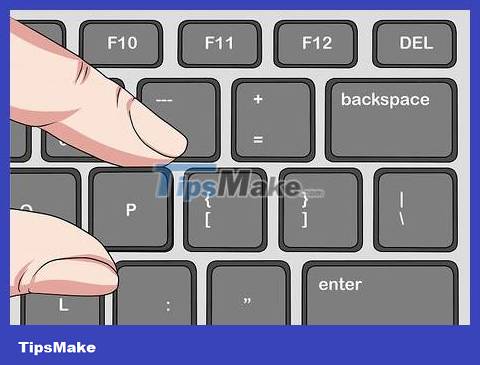
Gently press the key into position. This key will also be flat like the other keys.
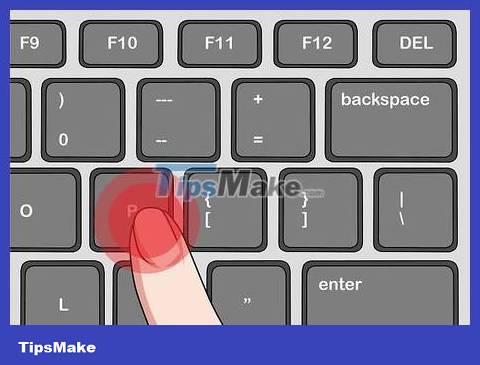
Press down from above the key. The key will pop into place.
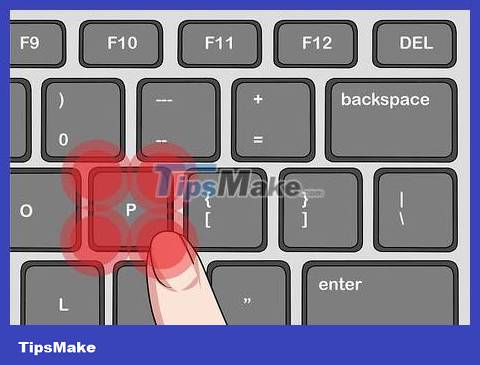
Press down around the key. You will hear a few light 'clicks', so the key has been attached.
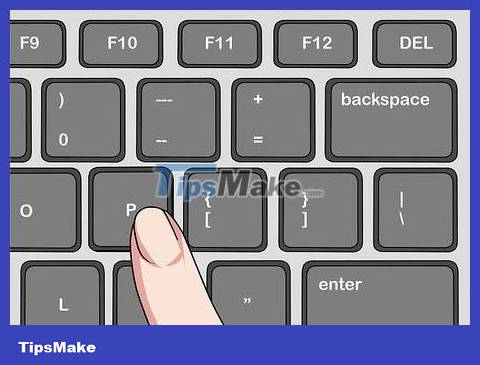
Check keys. Press the key to make sure it turns up. If the key turns on, everything is working normally.
If the key does not spring back up, the plastic hooks are not in the correct position.
A key that won't pop up can also be a sign that the key isn't installed properly.
You should read it
- Portrait of MacBook Pro 2012
- Instructions to temporarily deactivate iCloud
- Do not remove the battery when using the Macbook
- MacBook Air 2019 review - beautiful and durable laptop
- Compare MacBook Pro and MacBook Air
- Understand the connection and key presses on the Macbook
- Apple launched a standalone ad for the MacBook Air
- How to temporarily suspend friends, hide posts of temporary friends on Facebook
May be interested
- Microsoft will use the completely new Office key to replace the Windows key or the useless Menu key
 microsoft is planning to remove the right windows key with a completely new office key, to add new shortcut keys for microsoft office applications.
microsoft is planning to remove the right windows key with a completely new office key, to add new shortcut keys for microsoft office applications. - Do not remove the battery when using the Macbook
 batteries are always a concern for laptop users. in fact, many people always remove the batteries and run external ac power to maintain battery life.
batteries are always a concern for laptop users. in fact, many people always remove the batteries and run external ac power to maintain battery life. - MacBook Air 2019 review - beautiful and durable laptop
 this year's macbook air is $ 100 cheaper (vnd 2,300,000) compared to last year's model. also, the macbook air's intel y series cpu will be great for some, but not as fast as the u-series chips in pcs and the new 13-inch macbook pro.
this year's macbook air is $ 100 cheaper (vnd 2,300,000) compared to last year's model. also, the macbook air's intel y series cpu will be great for some, but not as fast as the u-series chips in pcs and the new 13-inch macbook pro. - Compare MacBook Pro and MacBook Air
 the article compares macbook pro and macbook air - two types of laptop products from the apple brand, helping you understand the pros and cons of each type if you are wondering between these two products.
the article compares macbook pro and macbook air - two types of laptop products from the apple brand, helping you understand the pros and cons of each type if you are wondering between these two products. - Why do the F and J keys on the computer keyboard have horizontal lines?
 many people believe that floating edges are born to help visually impaired people interact with computers better, but this is not its original purpose.
many people believe that floating edges are born to help visually impaired people interact with computers better, but this is not its original purpose. - How to remap the Fn keys on macOS
 many keys, like f3, may not be of much use and will be more useful when reusing it to perform other functions. today's article will show you how to remap the fn keys on macos.
many keys, like f3, may not be of much use and will be more useful when reusing it to perform other functions. today's article will show you how to remap the fn keys on macos. - Useful keyboard shortcuts on MacBook
 when using a macbook, if you know how to combine the shortcut keys, you will operate faster and work more efficiently. here are some common keyboard shortcuts on macos.
when using a macbook, if you know how to combine the shortcut keys, you will operate faster and work more efficiently. here are some common keyboard shortcuts on macos. - How to Fix Laptop Keys
 today's tipsmake will show you how to fix unresponsive laptop keys. if after cleaning the base frame and reinstalling the keys the problem is still not resolved, you may need to completely replace the specific key or the entire keyboard.
today's tipsmake will show you how to fix unresponsive laptop keys. if after cleaning the base frame and reinstalling the keys the problem is still not resolved, you may need to completely replace the specific key or the entire keyboard. - How to temporarily suspend friends, hide posts of temporary friends on Facebook
 recently, facebook has released the snooze feature to help users temporarily cancel friends by temporarily hiding someone's post on the bulletin board for 30 days. feature is the perfect solution to get rid of individuals (or the page you are following) who are spamming you recently.
recently, facebook has released the snooze feature to help users temporarily cancel friends by temporarily hiding someone's post on the bulletin board for 30 days. feature is the perfect solution to get rid of individuals (or the page you are following) who are spamming you recently. - Apple launched a standalone ad for the MacBook Air
 with no need to focus on defaming competing products, apple's new ad delivers the message this is a beloved laptop.
with no need to focus on defaming competing products, apple's new ad delivers the message this is a beloved laptop.






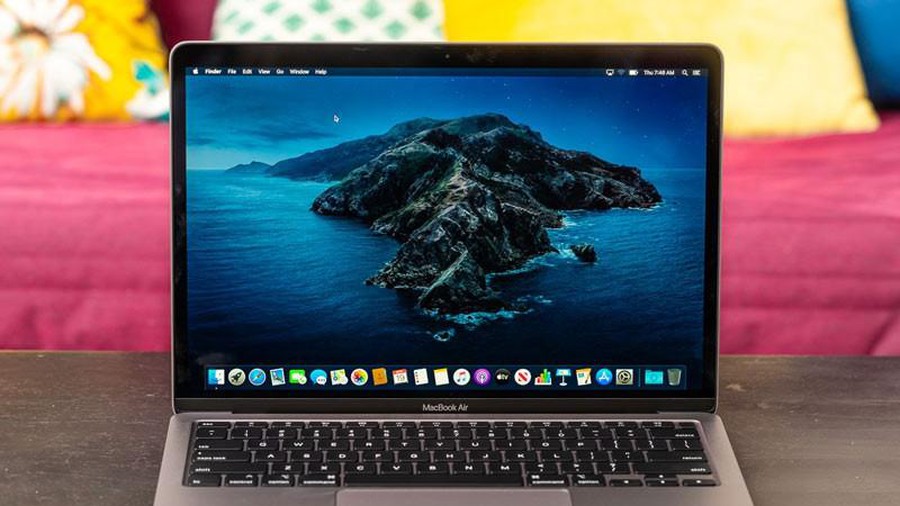



 How to Change Apple ID Password
How to Change Apple ID Password How to Exit Safe Mode
How to Exit Safe Mode How to Sign in to WeChat on PC or Mac
How to Sign in to WeChat on PC or Mac How to type long dash (em dash) on Windows or Mac
How to type long dash (em dash) on Windows or Mac What is the Rosetta 2 app? What are tasks like on a Mac?
What is the Rosetta 2 app? What are tasks like on a Mac? How to configure Android USB Tethering on macOS
How to configure Android USB Tethering on macOS